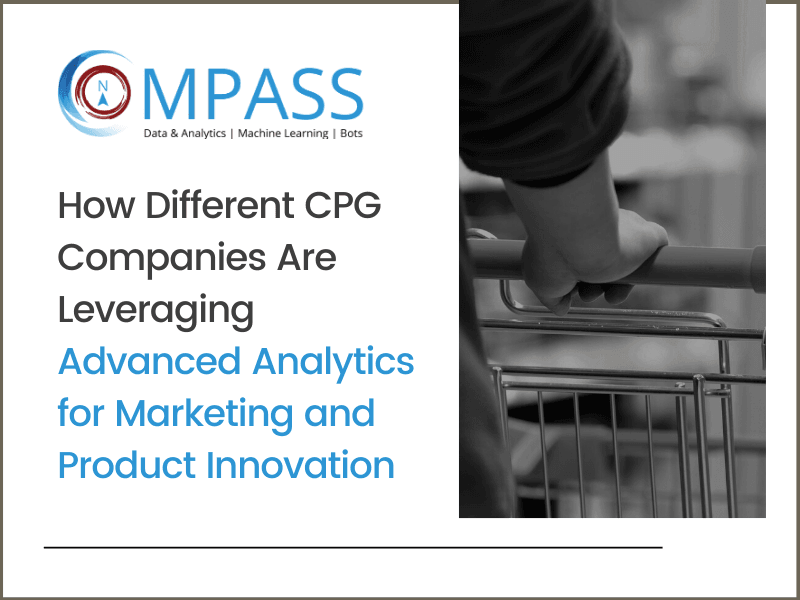Compared to businesses in other industries, the ones in the Consumer Goods (CG) industry spend a colossal amount of money on marketing and advertising. Advertising campaigns tend to have a major influence on the shopping and buying behaviors of consumers, driving up a CPG company’s revenue.
After nearly flat-lining in 2022, CPG industry digital ad spending will see a second consecutive year of strong growth in 2024 (16.6%). But a spending deceleration is on the horizon.
However, a large percentage of marketing efforts has little to no impact on sales and doesn’t drive the desired results. According to Nielsen reports, 59% of the trade marketing promotions that CPG companies invest in do not break even.
Another function that is critical to any CPG’s growth and revenue is product innovation. Based on the changing preferences of the consumer, CPG companies should constantly invest in developing and innovating new products.
Success in both marketing and product innovation depends majorly on leveraging data to make timely and accurate decisions. Several CPG companies today already recognize the need for leveraging advanced data analytics and are investing in relevant tools and services.
A thirst for insights is also reflected in CPG marketers investing more in marketing analytics compared with all other survey respondents – Gartner
- In this article, we’ll explore how different CPG companies are leveraging advanced analytics for marketing and product innovation.
Advanced Data Analytics in Industries – Case Studies
1. Turning diapers into insight: P&G and its use of Big Data
When we think of diapers, analytics might be the last thing we associate them with. But that is exactly what P&G is doing! P&G is using simulation analytics to design new products including disposable diapers. Simulation analytics essentially helps to ensure that the product performance is optimal. In order to do so, the analytics tool takes into consideration multiple variables to virtually create and tweak different virtual models or designs until the most optimal design is achieved. This way, thousands of iterations can be created in a matter of seconds at a fraction of the cost as opposed to the cost of creating these many design iterations by hand.
Another product where P&G has used analytics is when developing a new dishwashing liquid. Predictive analytics and simulation models were used to predict how moisture would excite various fragrance molecules in the dishwashing liquid so that consumers get the right fragrance notes at the right time throughout the dishwashing process.
P&G also uses big data analytics to create global customer-centric marketing campaigns. With the transactional information that the company collects, they get to know who their loyal customers are or which customers could become loyal. In order to deduce this, the company has developed a conceptual architectural framework that places the customer at the center. Every transaction and touchpoint that the customer makes either online, offline or in-store, is monitored.
Source: Datafloq
2. Reckitt Benckiser uses Big Data to work smarter
In a bid to gain in-depth BI insights, Reckitt Benckiser’s global business intelligence (BI) team wanted to collect third-party data apart from just internal operational data. In order to do so, Reckitt Benckiser retired their existing Amazon Web Services (AWS) system and implemented the Microsoft Power BI and Azure solutions.
They leveraged this data to understand how their products were faring at different retailers and help their marketing, product development and sales teams make highly data-driven decisions.
“…Data is most powerful when it’s accessible and understandable…When you put BI solutions in the hands of your boots on the ground—your sales force, marketing managers, product managers—it delivers a huge impact to the business…” – Wilmer Peres, Information Services Director of Big Data and Analytics at Reckitt Benckiser
Source: Microsoft
3. Acuvate reduces trade promotion spend for a transnational Consumer Goods company by 100k USD
The client: The client is a transnational consumer goods company co-headquartered in the Netherlands and London, United Kingdom.
Challenge: They had a challenge in measuring the sales uplift for various promotions being run in the emerging markets – hence losing out on ROI.
Solution:
- Extracting data from spreadsheets and integrating the same into a Data Mart
- Calculating the base sales by comparing periods where Promotions were not present for an SKU
- Calculating the Sales Uplift and growth for each Promotion
Benefits:
This solution allowed the marketing and revenue management teams to
- Identify which promotions were creating an uplift and for which specific SKUs
- Identify which SKUs were negatively impacted by the promotions run
- Increase sales by getting actionable recommendations on the best promotions to be run and understanding which ones work.
Result: The solution helped the client reduce trade promotion spend by over $100k
4. The various ways in which PepsiCo uses Data
PepsiCo uses data, AI and Machine Learning throughout the company in many innovative ways. Some examples include:
- Manufacturing with Machine Learning – The Frito-Lay (a subsidiary of PepsiCo) manufacturing plant is using ML for better process control. One project uses lasers to hit chips and then listen to the emanating sound to determine the texture of the chips. Another application of ML has been in determining the weight of potatoes. The machine learning model uses a vision system to be able to predict the weight of potatoes being processed. This also ensured that the company saved a considerable amount of money because it no longer had to spend $300,000 per line (they had 35 in the U.S. alone) for weighing elements.
- Augmented Intelligence with Ada – PepsiCo has an in-house augmented intelligence platform, Ada, that relies on human’s insight and algorithms. Ada can collate and ingest data from multiple sources to better leverage the massive amounts of data it collects. Ultimately, Ada will be used for innovation, design, research and price decisions.
In addition, PepsiCo is also using social prediction tools to collate and analyze customer conversation data along with its internal data. This is helping the company identify new products. Once more and more data is aggregated, the company identifies trends and marketing placements.
Source: Forbes
5. Coca Cola Leverages Big Data and AI for Product Development & Marketing
Coca Cola is widely recognized for its extensive usage of AI to harness all the data it generated and captures. The company’s new flavor – Cherry Sprite was a result of monitoring data captured from the company’s recently installed self-service soft drinks fountains, which allow customers to mix their own drinks.
Source: Forbes
Conclusion
There is a great potential for growth in CPG businesses by adopting big data and advanced analytics. Gathering the right data and developing the right business models is one part of the problem, however, that alone doesn’t yield the right impact unless companies can also translate the data-driven insights into effective action. In order to sustain and thrive in a competitive market, CPG companies should adopt AI and analytics across various functions.
Acuvate holds profound expertise in deploying AI, data and advanced analytics solutions for CPG companies including Unilever, Reckitt Benckiser, Coca Cola, etc. If you have any further questions regarding this topic, please feel free to get in touch with one of our CPG data experts for a personalized consultation!




